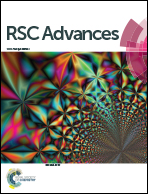Research on thermoplastic starch and different fiber reinforced biomass composites
Abstract
Thermoplastic starch (TPS) from native corn starch was prepared using different mass ratios of formamide–urea compound plasticizers. The influence of the compound plasticizer on hydrogen bonds has been analyzed by IR spectroscopy. The characterization of TPS was studied using X-ray diffractometry and differential scanning calorimetry. The results showed that the optimal mass proportion of starch/formamide/urea was 10/2/1. Starch plasticization destroyed the crystal structure of the native starch, increased the melting point of starch and improved the processability. Scanning electron microscopy showed that there was a significant change between starch molecules before and after plasticization. With the best plasticizing proportion of formamide–urea compound plasticizers, four kinds of thermoplastic starch composites reinforced with equal amounts of sisal, pulp, straw and wood fibers were obtained by a foam molding process. The IR spectroscopy investigations revealed the presence of hydrogen bonds and explored the mechanism of physical interactions in composites. Thermogravimetric analysis demonstrated that sisal fiber composites had the best thermal stability. Besides, the mechanical properties of different fiber reinforced composites were investigated. The sisal fiber composites demonstrated the best tensile and compressive strength, 3.85 MPa and 1.37 MPa, respectively, among the specimens. The fracture surfaces of these composites were also observed by SEM.


 Please wait while we load your content...
Please wait while we load your content...